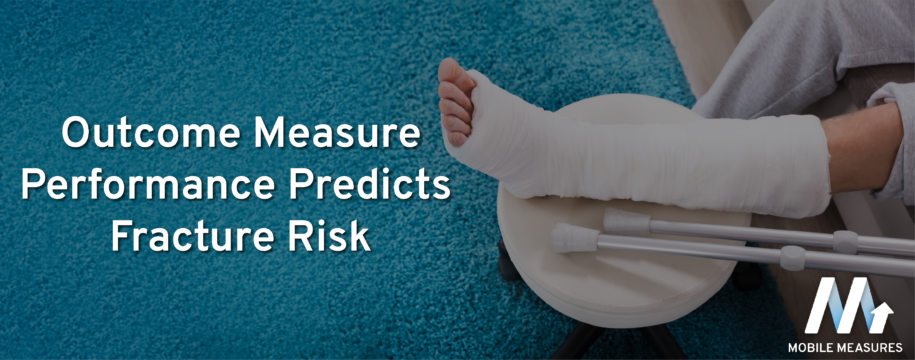Results of an 18-year study
Share on facebook
Share on twitter
Share on linkedin
Share on email
Fractures in older adults are associated with significant disability and cost. Therefore, it is essential for physical therapists and other healthcare providers to have access to validated tools that can accurately identify those at high risk of fracture in order to intervene with effective strategies. These tools not only need to be reliable and valid, but they also need to be simple and convenient enough to be used in a clinical setting.
A recently published study by Alajlouni et al (2020) followed 1,251 older adults from 2000 to 2018 and found that baseline performance on 3 functional outcome measures independently predicted fractures in men. Interestingly, baseline performance did not predict fractures in women. Rather, the rate of decline in performance did predict fractures.
Timed up & go (TUG) test
The TUG test measures the time (in seconds) taken to stand up from a chair, walk 3 meters, turn, walk back, and sit down.
In men, baseline TUG scores of >8 sec was associated with a 2.5-fold greater risk of fracture after adjusting for age, BMD, and other common risk factors.
In women, baseline TUG scores did not significantly predict fracture risk. However, a decline in score of ≥4.6 sec was associated by a 2.5-fold greater risk of fracture.
5 Time sit-to-stand (5xSTS) test
The 5xSTS test measures the time (in seconds) taken to stand up from a chair repeatedly, 5 times in a row, with arms folded across the chest.
In men, baseline 5xSTS scores of ≥14.5 sec was associated with a 2.2-fold greater risk of fracture after adjusting for age, BMD, and other common risk factors.
In women, baseline 5xSTS scores did not significantly predict fracture risk. However, a decline in score of ≥3.9 sec was associated by a 2.65-fold greater risk of fracture.
Gait speed test
The gait speed test in this study was measured by taking the time in seconds to walk 6-meters at a normal speed and then converted to m/s.
In men, baseline gait speed of ≤0.8 m/s was associated with a 1.87-fold greater risk of fracture after adjusting for age, BMD, and other common risk factors.
Reference
Alajlouni D, Bliuc D, Tran T, et al. Decline in muscle strength and performance predicts fracture risk in elderly women and men, The Journal of Clinical Endocrinology & Metabolism, Volume 105, Issue 9, September 2020, dgaa414, https://doi.org/10.1210/clinem/dgaa414
